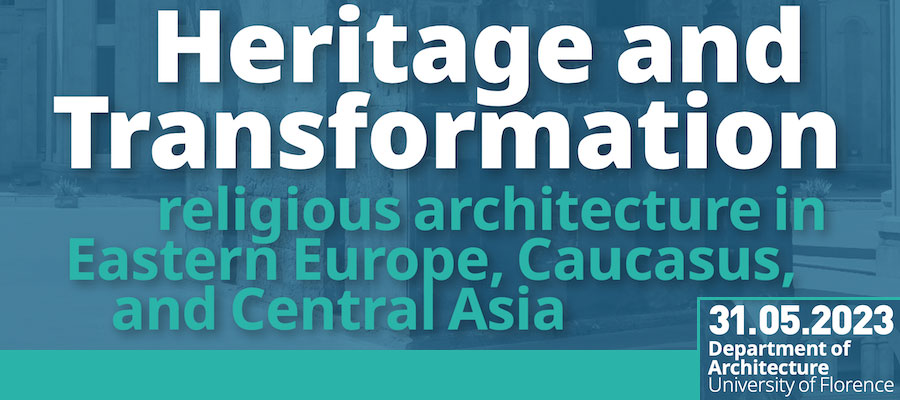Heritage and Transformation: Religious Architecture in Eastern Europe, Caucasus, and Central Asia, University of Florence, May 31, 2023
For various cultures, religious architecture represents one of the highest moments of research and formation of the architectural language; it is a privileged expression in which communities recognize themselves. The analysis of places of worship is particularly significant in the territories of Eastern Europe, the Caucasus, and Central Asia, whose religious history has been marked on several occasions by radical and transformative events, from the spreading of Christianity and Islam between the 4th and the 8th century, up to the more recent policy of state atheism of the USSR and the subsequent religious "rediscovery" in the post-Soviet era.
Moving from an architectural perspective, but opening the analysis to the fields of archaeology, history, history of art and anthropology that deal with material heritage, the conference aims at investigating the processes of formation, development, and transformation of religious identity in the targeted territories. Without circumscribing the investigation to a delimited chronological span, the goal of the initiative is to constitute a cross-chronologically dialogue, fostering exchange between specialists of different historical eras and promoting a more comprehensive understanding of a complex topic on which there is an increasing need to focus attention.
Considering the broad geographical region of reference, contributions related (but not limited) to these points are welcomed:
- Cult, architecture, and archaeology before the great religions;
- The spread of Christianity and Islam and the impact on the built environment;
- Religious and cultural policies of Tsarist Russia and the Orthodox church;
- Religious repression under the Soviet Union;
- Restorations and reconversions of sacred architecture in the Soviet era;
- Ceremonial palaces (Tbilisi, Almaty, Bishkek, etc.);
- The rediscovery of religion as an identity factor after the collapse of the USSR;
- Post-Soviet approaches to restoration, preservation, and enhancement of religious heritage;
- New religious buildings in the post-Soviet space.
